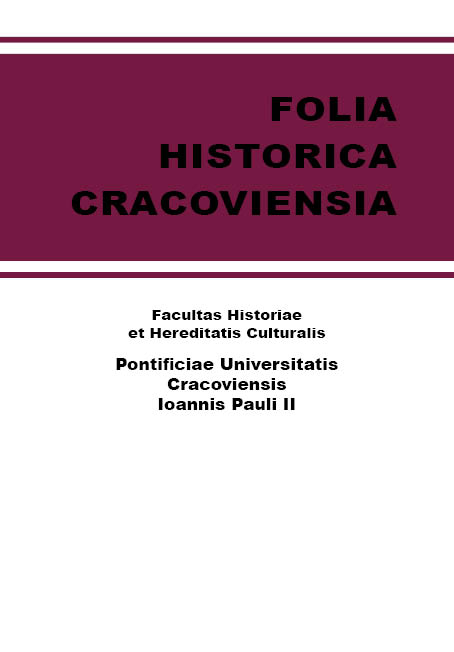Prophet Elijah in the woods in the high altar of the Church of Discalced Carmelites in Czerna
Prophet Elijah in the woods in the high altar of the Church of Discalced Carmelites in Czerna
Author(s): Jerzy Żmudziński, Adam OrganistySubject(s): Christian Theology and Religion, Sociology of Religion, History of Religion
Published by: Wydawnictwo Naukowe Uniwersytetu Papieskiego Jana Pawła II w Krakowie
Keywords: Elijah; Carmelite mysticism; Czerna hermitage; Tommasso Dolabella; Father Venante da Subiaco; Agnieszka Firlej née Tęczyński;
Summary/Abstract: One of the most interesting early modern paintings in the vicinity of Krakow, located at the main altar of the Discalced Carmelite church in Czerna has not, to date, been the subject of a dedicated study. Although we are not in possession of archive sources which would confirm the attribution, for over a century the canvas has been held to be a work of Tommaso Dolabella. The first section of the article discusses the content of the image, which is ideologically linked to the altar. It also attempts to interpret the significance of Elijah, identified as Messiah’s predecessor, as well as the role of miraculous sustenance brought to the prophet by an angel. This part of the article focuses also on a rather inconspicuous theme of Elijah’s bare foot resting on the foot of God’s intermediary, which could symbolize a kind of successful spiritual struggle. Further in the text, the Czerna painting is subjected to a detailed stylistic analysis. By way of comparisons to works by father Venante da Subiaco, a new attribution and dating of the work presenting Prophet Elijah in the wilderness are suggested. The composition was painted in the years 1630–1632, when Venante was prior at the Selva Aurea hermitage in Rytwiany. Venante’s authorship of the Czerna painting is at least probable, as determined by three basic facts: the style of the painting, relations between Czerna’s and Rytwian’s founders (Agnieszka Firlej, née Tęczyński, was Jan Tęczyński’s sister), chronological data (the likelihood of the completion of the painting for the main altar in a small church in Czerna relatively soon after its construction had been commenced in 1629), last but not least, a fairly common tradition of monastic painters painting pictures commissioned by selected lay founders.
Journal: Folia Historica Cracoviensia
- Issue Year: 22/2016
- Issue No: 1
- Page Range: 329-358
- Page Count: 30
- Language: English

